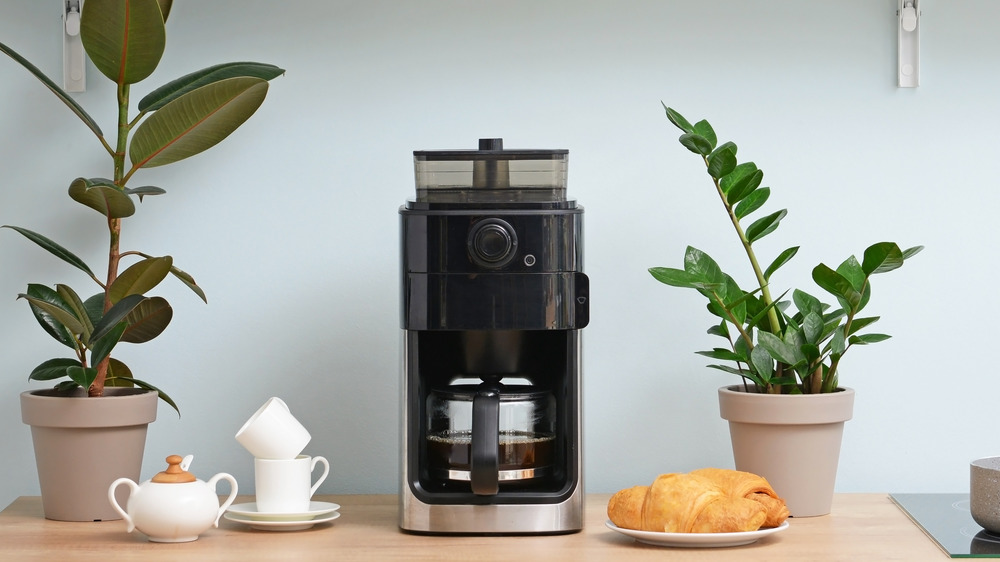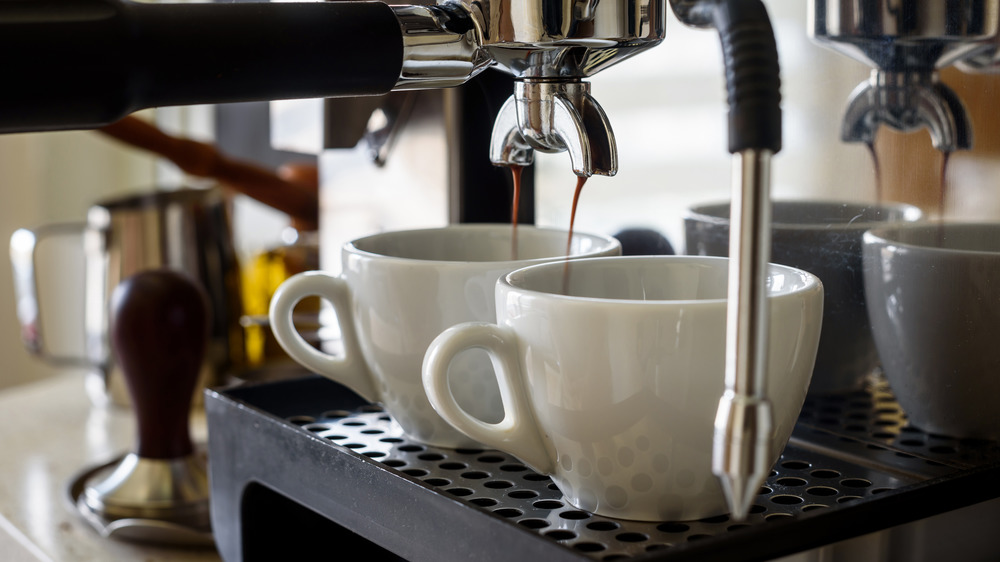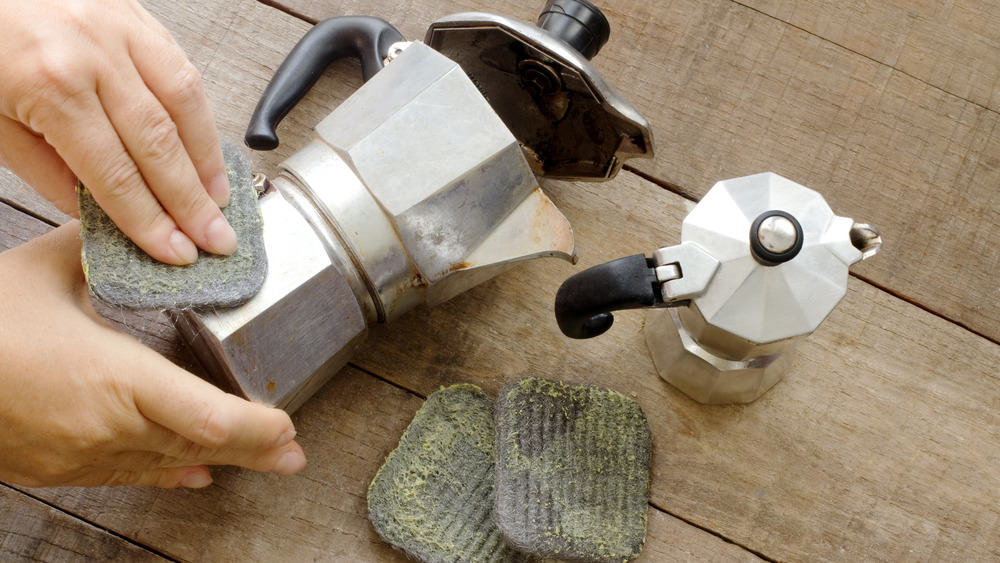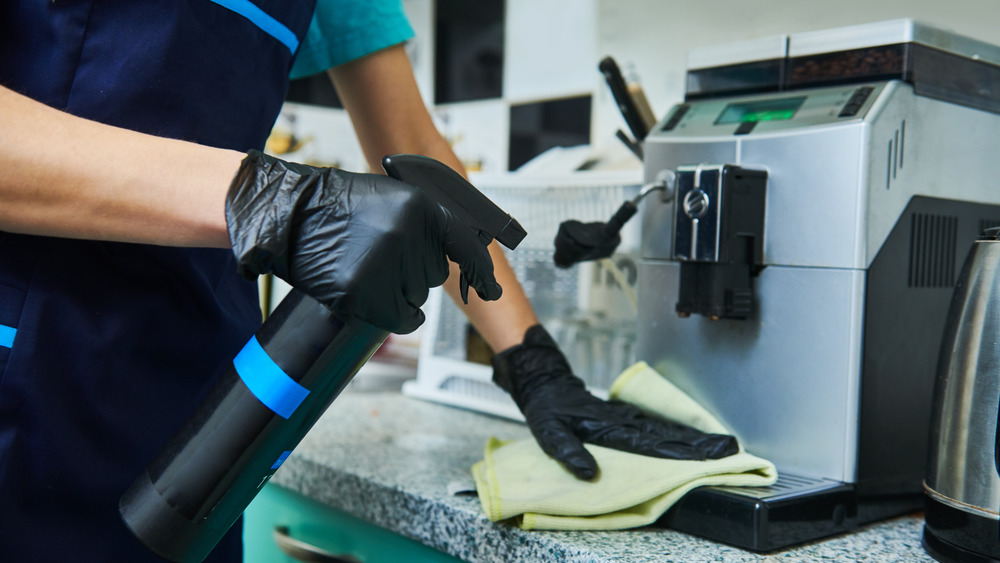The Grossest Thing About Your Coffee Maker Will Make You Squirm
Can you guess what the germiest surface in your house is? Well, in 2011, the independent public health organization NSF International conducted a household germ survey where they had volunteers swab numerous household items, these swabs being subsequently tested for germs. As researchers said when writing up the survey results, the biggest surprise was the fact that kitchens are far dirtier than bathrooms. Of the top five ickiest items in your house, chances are that at least three of these — the dish sponge, the kitchen sink, and the coffee reservoir — will be located in the kitchen. (The coffee maker's fifth on the list, with toothbrush holders coming in third and pet bowls in fourth.)
Coffee reservoir? Why would this be dirtier than a toilet? Baffled, Mashed turned to coffee expert Shabbir Nooruddin, founder of coffee lovers' website Coffee In My Veins. Nooruddin wasn't surprised at how germy coffee makers can be, especially if they're not properly cleaned. "As a general rule," he told Mashed, "don't leave water in the machine if you're not going to use it for more than a day!" He said that prior to storing a machine, you should run a few empty brew cycles to make sure there's no coffee left inside, then empty the reservoir out and let it dry completely before you put it away.
Disgusting things that can happen if you don't clean your coffee maker
In order to drive home his point, Nooruddin shared a few coffee maker horror stories. "In my early days of coffee making," he explained, "I had stored an espresso machine in the attic. I took it out about six months later only to discover there was a thick layer of scale in the tank." Ugh, sounds nasty. Why would this be, we asked him, and he answered: "Apparently, I had forgotten to fully empty it!" He said he tried to run it through about 20 descaling cycles, but admitted he finally had to throw in the towel and throw out the machine.
Another story he shared was even nastier but luckily had a happier ending. Nooruddin spoke of a time when his cousin forgot to empty the milk out of her espresso machine's frother, an accident that resulted in the milk solids coating the inside of the frother and causing what he described as "a nasty smell." He went on to say, though, that, "Fortunately, some hot water and soap cleaned it out pretty well!"
How to clean different types of coffee makers
French presses are easy to clean, Nooruddin said. Just wash the chamber by hand or in a dishwasher. If the mesh filter gets clogged, though, you may need to unscrew it, hand-wash all of the separate parts, then let them dry before reassembling. For drip makers, you'll need to rinse the pot every day and wash it with soap and water every few days. The filter basket should also be washed when you do the pot, and if there's a removable reservoir, wash this as well.
Nooruddin said a pour-over funnel or Chemex is another easy-to-clean device, requiring rinsing after each use and then a soap-and-water wash maybe once or twice a week. A pod coffee maker like a Keurig or Nespresso is a whole 'nother story, though, as is an espresso machine. These are all complex pieces of machinery, and water trapped in the internal works could lead to troubles like scale or even mold. To clean these machines, you need to wipe down the outside, then empty and wash the drip tray, wiping off the brew head (Nooruddin said a damp paper towel is okay to use for this), and then descaling the machine periodically.
How often you should clean your coffee maker
Nooruddin explained that in order to tell whether your coffee machine needs cleaning, you should think of the cleaning process in three steps: "One is a basic rinse," he said, "which you should do every time you use it." If you're using a French press or pour-over funnel, according to Nooruddin, all you'll need to do is "just rinse it clean and it'll be good to use for the next day." The next step is a deeper clean with soap and water or perhaps with a dishwasher (as long as you're sure the parts are dishwasher safe). This is something that should be done every three to four days.
The final step, according to Nooruddin, is the descaling cycle, which should be done about once every three months in automatic coffee machines including those of the drip and pod variety. As to how you de-scale, he called this process "pretty simple," since all you need to do is fill the reservoir with a mix of white vinegar and water (Nooruddin suggested citric acid would work as well), run as many cycles as it takes to empty the reservoir, then repeat the process with plain water to flush all of the vinegar out of the system. Nooruddin then recommended keeping your equipment as dry as possible after cleaning. If you put in the effort to keep your coffee maker clean, who knows? It might even drop down a few spots on the household germiness list.



